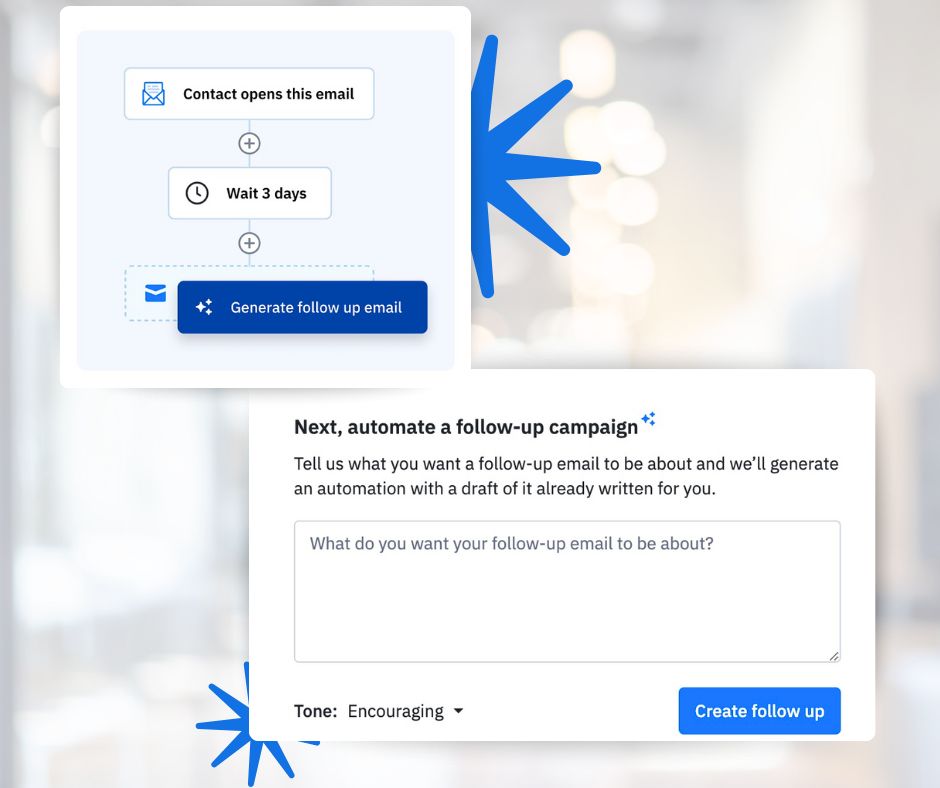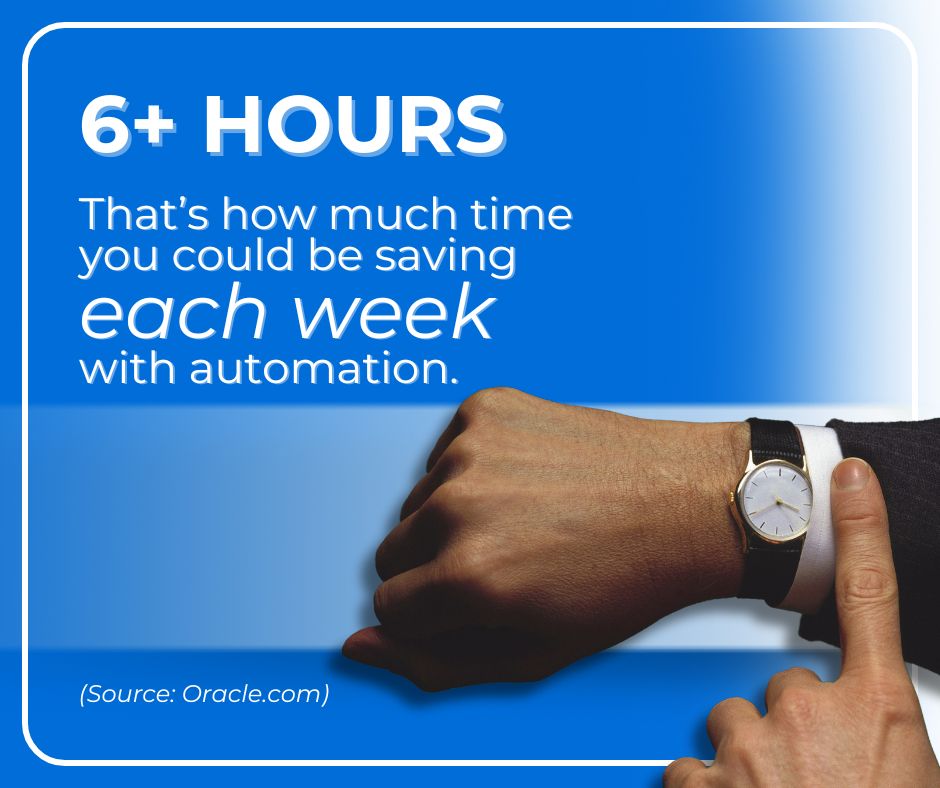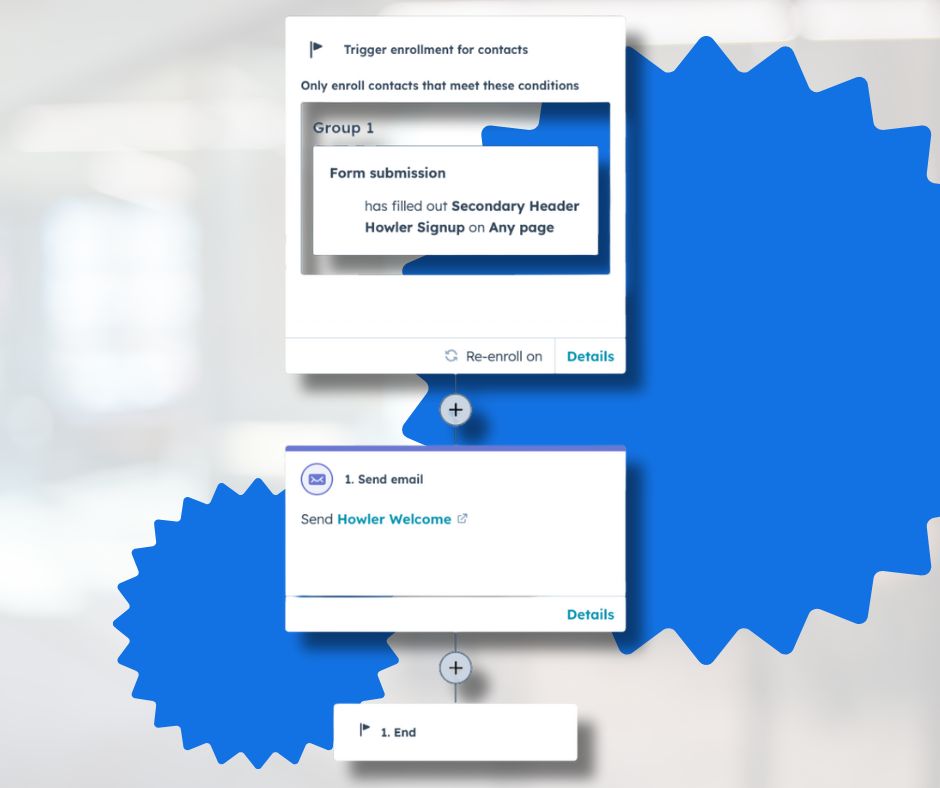If you’ve ever wondered who needs marketing automation, even once, it’s probably on your radar for a reason.
Maybe you’re spending too much time chasing leads. Maybe your follow-up emails are late, or you’re not even sure which campaigns are driving real results.
Whatever the case, marketing automation isn’t just for big brands with massive budgets. It’s for businesses (large or small) trying to save time, improve conversions, and work smarter, not harder.
Who is Marketing Automation Really For?
Short answer: most growing businesses.
Marketing automation helps you handle repeatable tasks, like sending emails, following up with leads, and staying in front of the right people without doing it all manually.
It gives your business a way to scale without overfilling your plate.
You probably need marketing automation if:
- You’re manually emailing leads and forgetting follow-ups
- You’re unsure what’s working in your marketing efforts
- You have too many tools, but nothing’s connected
- Leads or reviews are falling through the cracks
- You’re spending more time on admin than growth
These are signals that your marketing systems (and your team) are maxed out.
According to a recent study by Invesp, 80% of businesses using automation saw an increase in leads, and 77% saw higher conversions.
But what’s more important is this: marketing automation gives you time back, which is usually the one thing small business owners don’t have.

Automation setup for a custom message at a certain time
What Automation Does for You
People often picture robots sending cold emails or cookie-cutter messages before they wonder, “Who needs marketing automation?”. But, in practice, it’s much different.
It’s personal, intentional, and designed to support your actual workflow, not replace it. Here’s some of what you can have your automations handle for you:
- Sending the right message to the right person at the right time
- Helping you follow up with leads automatically (and on time)
- Tracking user behavior to help you know what’s working
- Keeping your contact list organized and clean
- Reducing the time you spend switching between tools or platforms
Think of it as a digital assistant that keeps your pipeline moving, even when you’re off the clock.
You don’t need to be a tech expert. You just need a few repeatable processes and a clear goal.
3 Tips to Get Started With Marketing Automation
Getting started doesn’t have to be overwhelming: start by getting familiar. Here’s how to take your first steps without overcomplicating things.
1. Start With One
Take some time to brainstorm and write down all of your repetitive processes. Pick something you already do again and again.
Maybe it’s sending a thank-you message after someone fills out your contact form. Maybe it’s following up with leads who asked for a quote but never booked.
Automate just that one piece.
For example, if a prospect fills out a form on your website, your automation can instantly send:
- A personalized email
- A calendar link for scheduling
- A task for your sales team to follow up
That’s one simple automation that saves time and improves results. No coding, no overwhelm.
2. Tie It to a Clear Business Goal
Don’t automate for the sake of it. Instead, ask: What outcome do I want?
In case you’re drawing a blank, here are some great examples…
- Faster lead response time
- More booked consultations
- Better review collection
- Increased repeat business
Once you know your goal, it’s easier to build or choose the right workflow. For instance, if your goal is to collect more reviews, set up a trigger to send an automated review request a day after service.
3. Work With What You Already Use
You don’t need to rebuild your tech stack. Start with tools that will fit with what you already use, like ActiveCampaign, HubSpot, or Zapier.
Look for things that:
- Integrate with your CRM or website
- Let you build simple workflows with clear triggers
- Track actions and outcomes so you can measure what works
Choose a platform that makes it easy to update or turn off automation flows. That way, you stay in control.

What to Pair With Automation for Even Better Results
For a business owner who needs marketing automation, most of these are probably in place already. But just in case, here’s the scoop.
Marketing automation is powerful on its own, and when you combine it with other smart strategies, you see even stronger results. Here’s what it works best with:
Local SEO
Local SEO helps people in your area find your business online. If your business shows up when people search for “home inspector near me” or “HVAC repair in [your city],” automation can step in as soon as they click your website.
That means:
- An instant email after a form fill
- A lead has been added to your CRM
- A helpful follow-up that nudges them to schedule
SEO drives the traffic. Automation turns that traffic into booked business.
PPC (Pay-Per-Click Advertising)
Running Google Ads or social ads? Automation helps you follow up with every click.
For example:
- Someone clicks your ad but doesn’t convert
- Automation can retarget them with a follow-up email or reminder
- You can track which ads led to real leads and sales
Without automation, you’re paying for clicks but possibly losing the lead. With it, you stay connected and improve ROI.
Social Media
Automation can also support your social media strategy, especially when it’s tied into your CRM. Marketing automation can also play a key role in managing and scaling your social media efforts.
Many businesses (especially in B2B) use automation tools to schedule content, assign engagement tasks, or trigger follow-ups based on CRM activity. For example:
- A new lead fills out a form and gets added to a nurture sequence that includes social content
- A customer review triggers a task to share the feedback on your channels
- Someone clicks a campaign link and gets flagged for outreach or DM engagement
It’s a great way to stay visible and consistent on social without having to manage every step manually..
Online Review Requests
Reviews help build trust. With automation, you don’t have to remember to ask. Set it up so every customer gets:
- A review request via email or text after the service
- A thank-you message when they leave feedback
- A gentle follow-up if they didn’t respond the first time
This keeps your review profile active without adding more work to your day.
CRM Integration
If you use a CRM to manage contacts and leads, automation can keep everything updated in real time.
That means:
- New leads are automatically added with tags or stages
- Notes or updates are triggered by email clicks or form activity
- No more copying and pasting info across tools
Clean data means smarter marketing and less confusion across your team.

Automated “Welcome” email following a qualifying action
Email Segmentation
Not every lead is the same. Segmentation helps you send the right message to the right person based on their actions or interests.
For example:
- A first-time visitor gets educational content
- A repeat customer gets a loyalty offer
- A hot lead gets a direct invite to schedule
Automation makes this happen without you having to remember who’s who.
Final Word: Who Needs Marketing Automation?
By now, you probably know whether you’re someone who needs marketing automation. If you’re spending hours doing things that feel repetitive, or if you’re losing track of leads, emails, or performance, it’s you.
It doesn’t need to be complicated or expensive…in fact, it should make your life easier and your work more lucrative. Just start small, build smart, and tie it to your real goals.
Need help figuring out a plan, or know someone who needs marketing automation? At WolfPack Advising, we help service-based businesses set up lean, effective marketing systems that actually save time and drive results.
Let’s talk about your goals: schedule a consultation this week.




